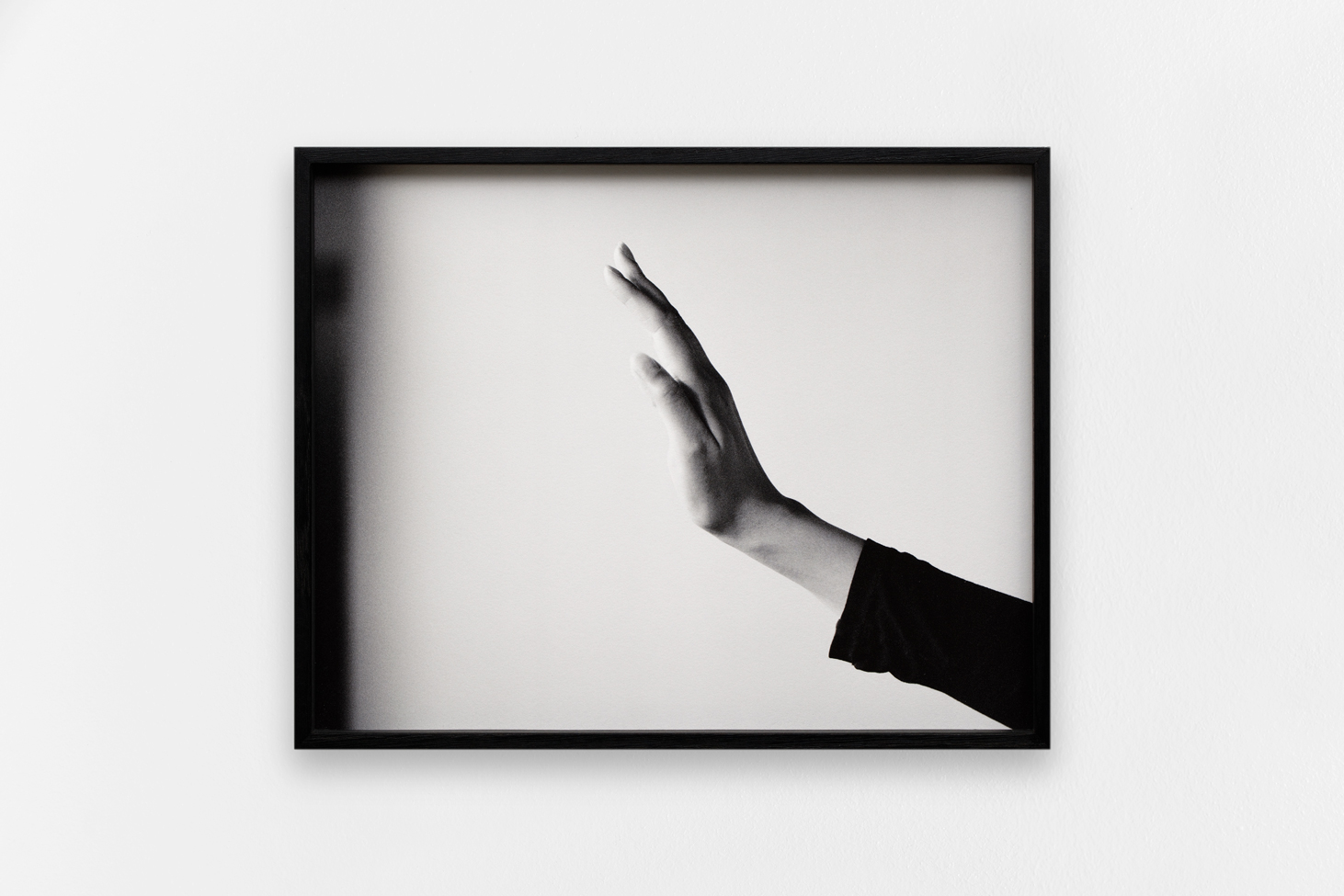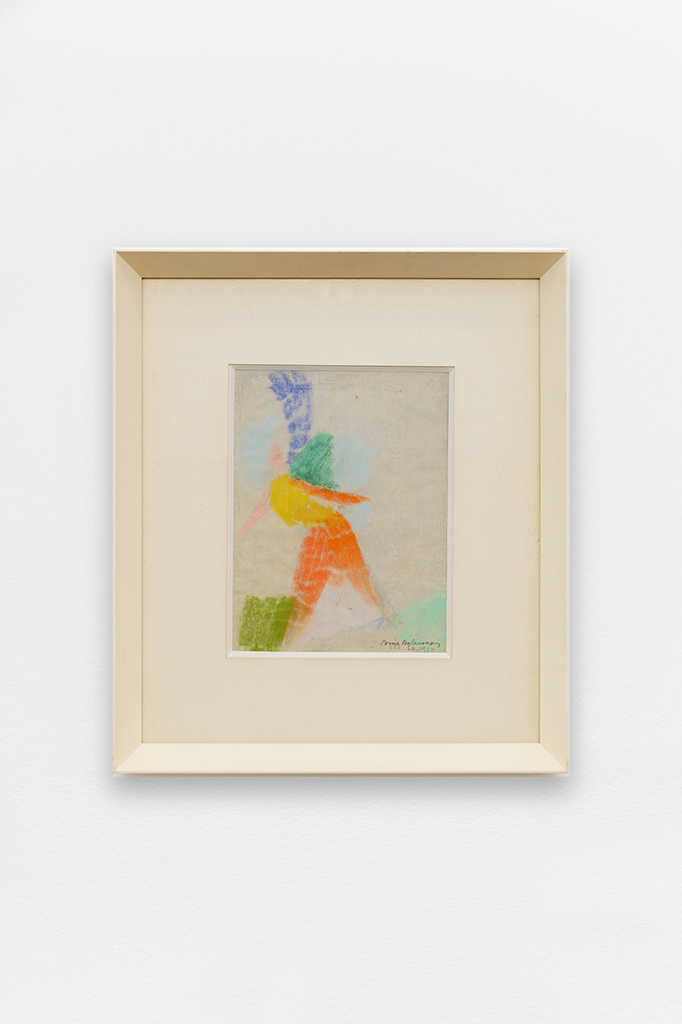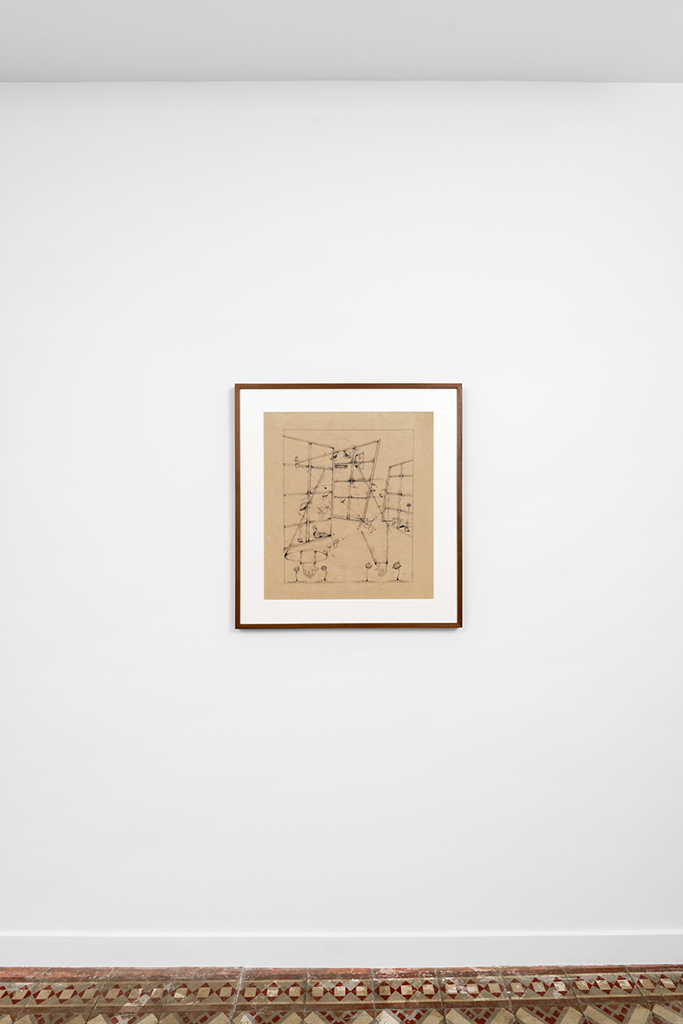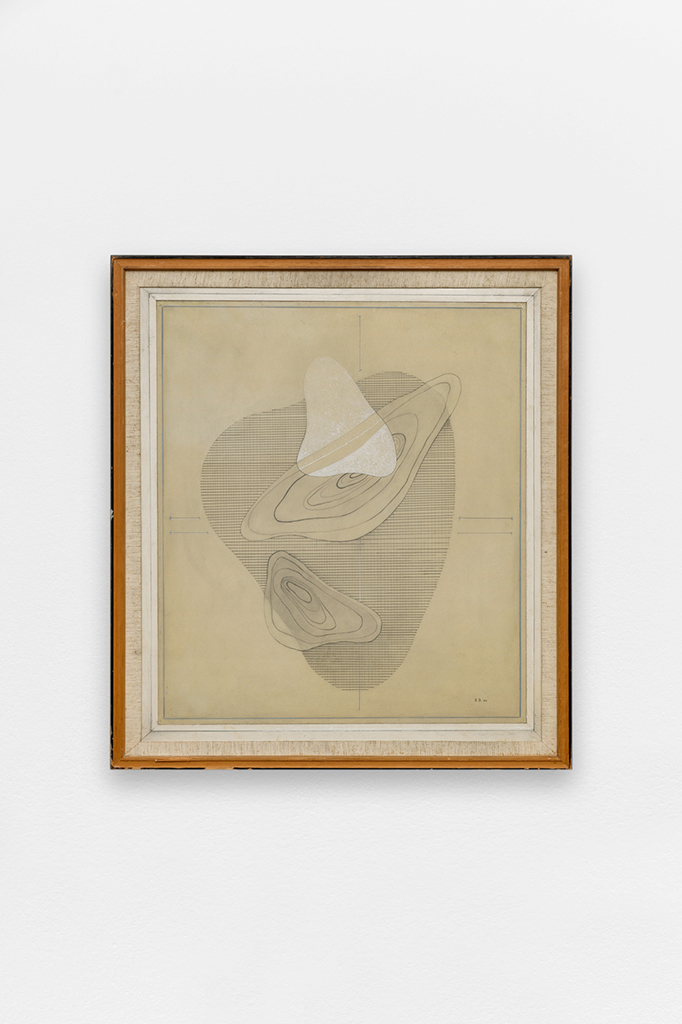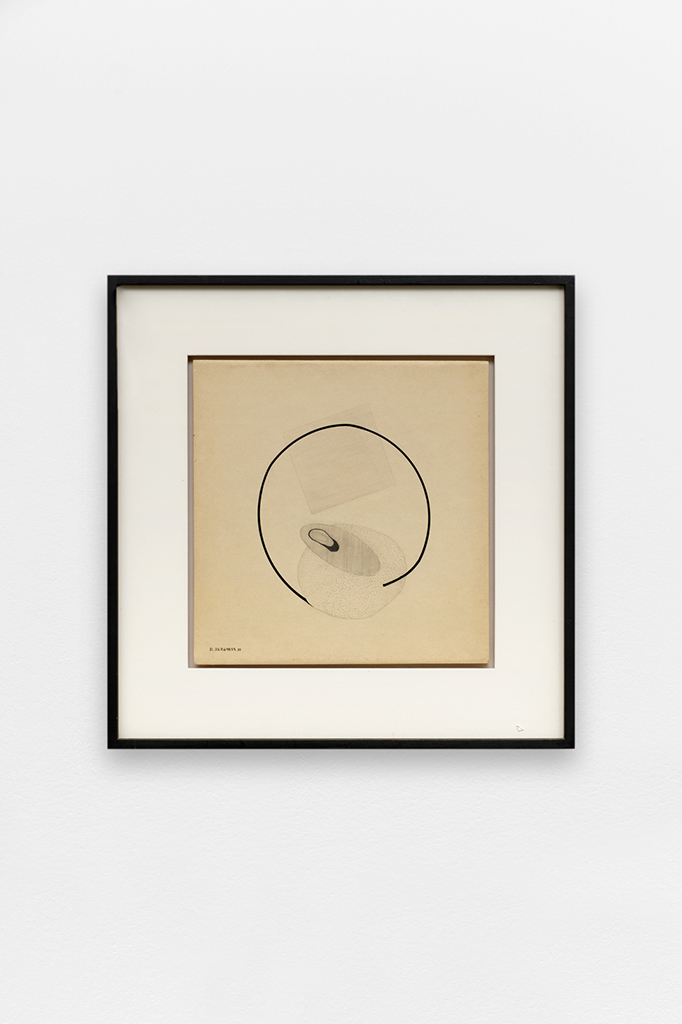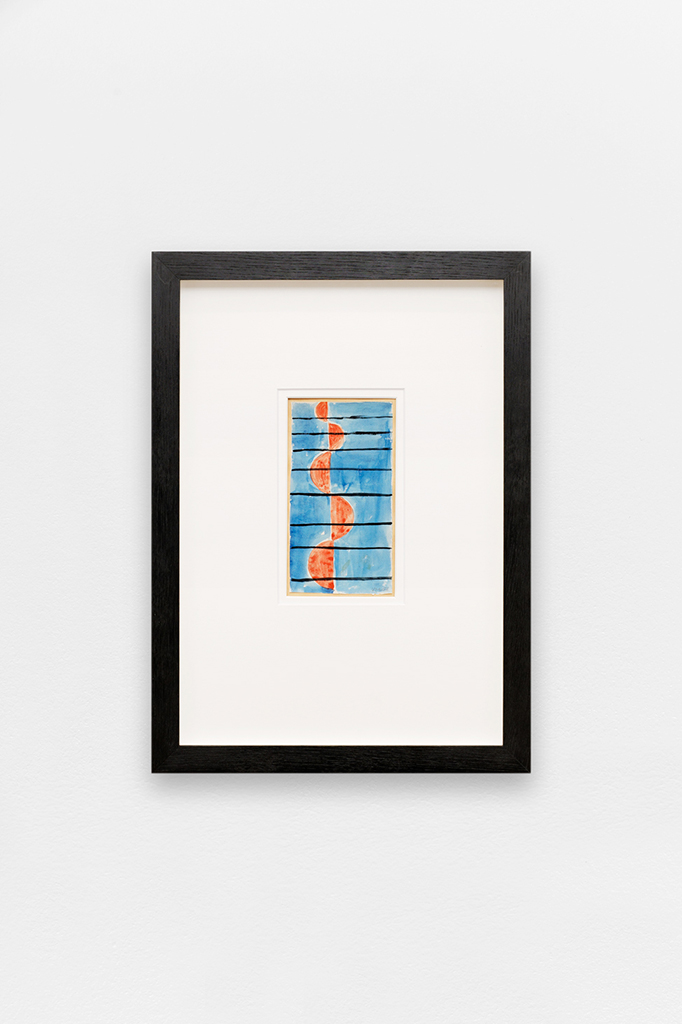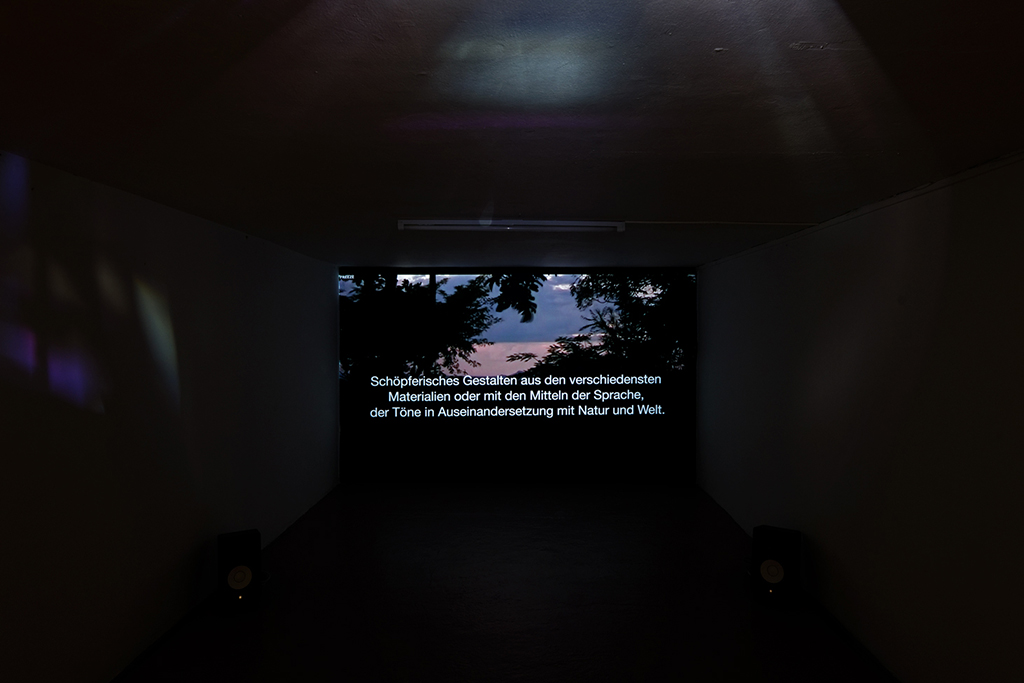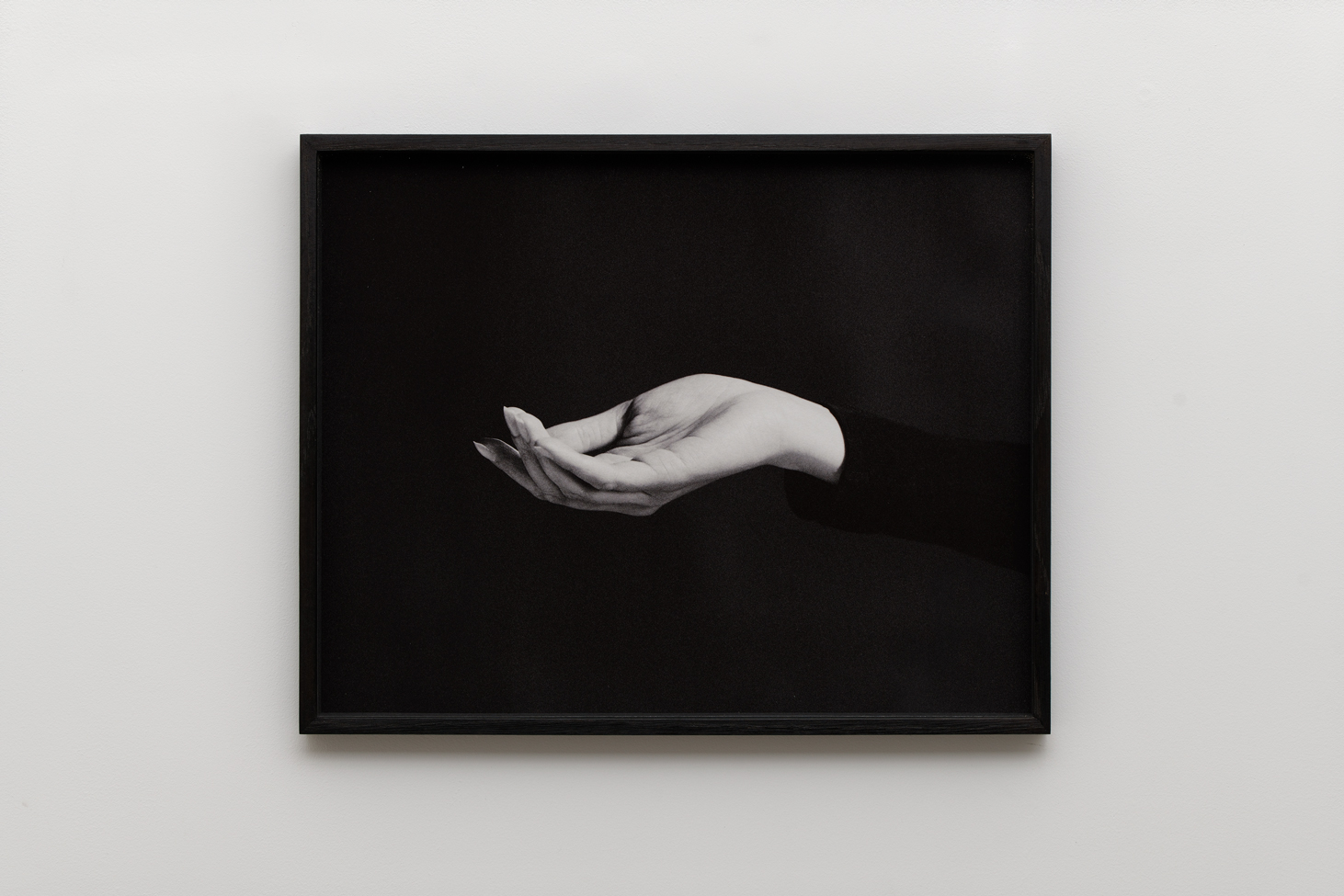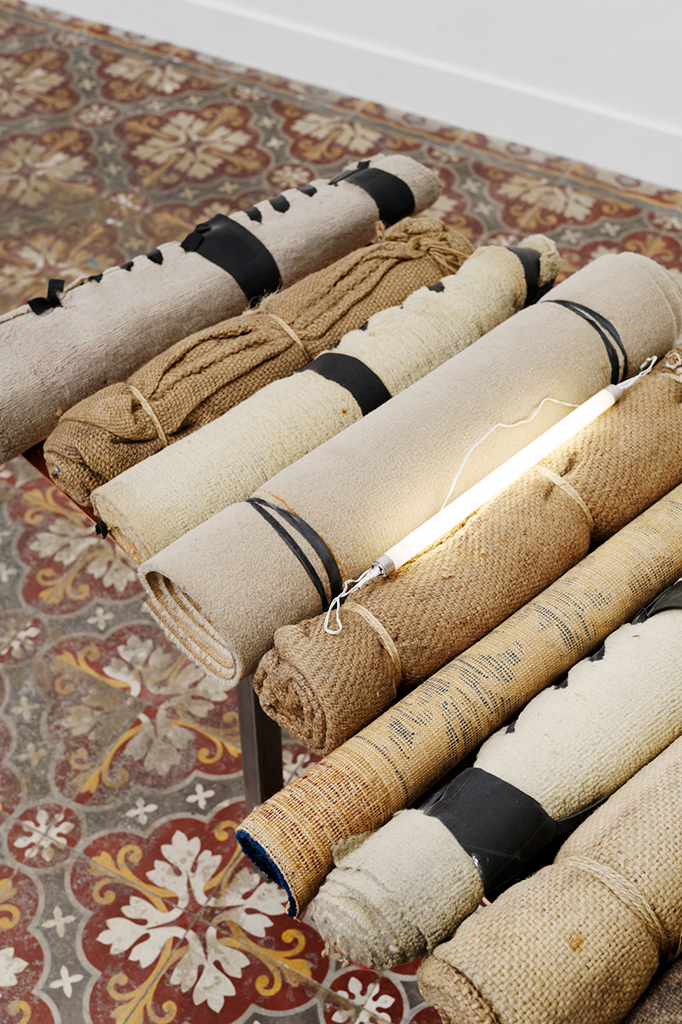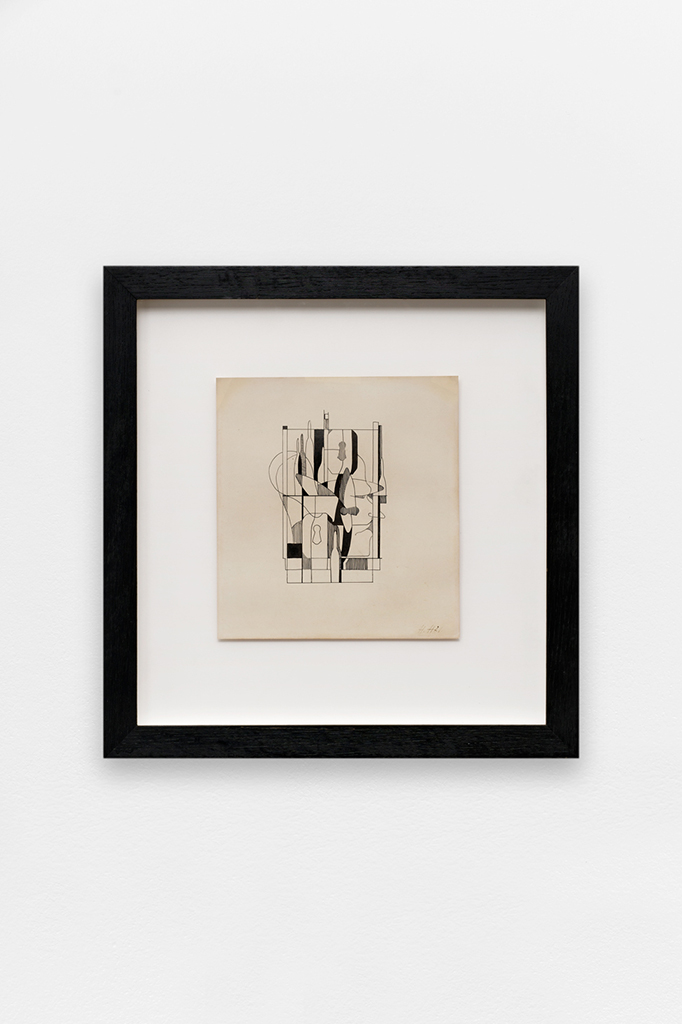
qui montent de la terre (Rising from the Earth)
Ella Bergmann-Michel, Hemali Bhuta, Sonia Delaunay, Aurélien Froment, Hannah Höch, Laura Lamiel, Vera Molnár, Anthony Plasse, Emma Wolukau-Wanambwa
10.03.2022 - 12.05.2022, vernissage 10.03.2022
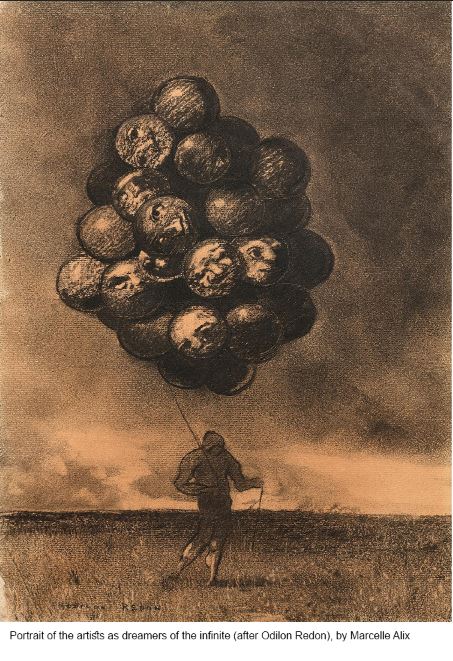
en français plus bas
“The moon drinks the blood of extinguished stars” and “We drink the sun”
Grisélidis Réal (1)
We love art and history. What happens within our walls continuously brings together narratives and forms of limitless temporality, and to see them shine together is to fall into life, as at the sight of dust particles in a ray of sunlight. After two months spent rearranging our gallery space, the group exhibition "raising from the Earth" accompanies this feeling of regained familiarity, wherein the materiality of beings and things commutes, and possibilities of action are provided once again: to find meaning and a liking for what is concrete, to bring artworks from the past — lent by Galerie Zlotowski — to the present, to combine "travelling" works and pieces conceived in the darkness of an inactive space where the time of the old staircase, now replaced, is not forgotten. What if the space was ultimately similar to the ectoplasm — a kind of open body completely permeable to the outside? The artists would then use the space to make it say things about what begins and ends, what is still there, lurking in the darkness of memory or between the layers of the Earth. The entire colour scheme of the exhibition is telling of our relationship with the space, whether it is enclosed or indeterminate, whether it is plunged into darkness or whether this darkness is removed by electrical radiation. Or whether we have to keep looking deeper and deeper to find miracles and follies. More than once we have asked ourselves if this space was really ours and if hanging works was enough to make it our own. Today, we are letting the artists negotiate with everything relating to burying or revelations. Art is indeed the power given to indeterminate, invisible or inanimate things, and artists are unexpected spirit mediums.
The past
don’t know where to begin, from the wounds of time to the slowing down of time and the extended time, to documenting time or matter in time or my understanding or struggle to understand it all in changing times.
Hemali Bhuta (2)
What rises from the Earth? Snippets of stories, memory transforming the past into matter that is yet to be shaped. Snippets that give scope to the building of an imaginary: a fantasised landscape of uninhabited "promised lands" with Emma Wolukau-Wanambwa; the manual know-how that reveals the intensity of the colour yellow and the work of the river tracing a golden line between the Bay of Bengal and Limousin with Hemali Bhuta; a work space plunged into darkness with Anthony Plasse. These artists know how to ask an absent material (the rational narrative of a landscape’s history, the search for gold, a space that is now inaccessible) to give all it is capable of giving. The works resulting from these haunted processes have been given the force of unfulfilled potential. They are powerful ghosts.
Ectoplasm
Between the sky and the Earth are the abstract works of Vera, Ella, Sonia and Hannah. They remind us that nothing is fixed or stable, that there is no firm ground but an unstoppable journey from form to form that conveys ideas, an impetus, a past. Vera's painting is explicitly directed towards Sonia. There is continuity. A kind of psychic transmigration, like a community of roaming atoms which we let travel through us.
Black
We should learn to live more on staircases. But how?
Georges Perec (3)
Here you are, Anthony, in the darkness of the gallery's first basement, staring at the staircase — which will soon be replaced —, and the surrounding space. You have meticulously prepared for this moment that amounts to a programme of gestures memorised in advance, in order to be able to carry out, in complete darkness, what you have planned to do: read the space. It is the darkness that produces the colour black which has always been so difficult to achieve. Yet, it is the light present for a millisecond that transforms certain parts of the white canvas into surprisingly neat black-powder writing. The colour black regains its magic by joining with the white canvas. What is inscribed upon it also travels within you. It is a chain of multiple reincarnations.
Hands
This exhibition shows few bodies, but specific parts such as the hands of the admonisher, a character from Renaissance paintings who is supposed to guide our gaze. Here, the gestures inventoried by Aurélien Froment’s photographs are scattered, reflecting snippets of narratives drawn from Pierre Zucca’s film set photographs. In contact with other works, these gestures multiply the possibilities and delicately guide us towards more abstract forms. They are also the hands of archaeological excavations clearing and taking care of the smallest fragment. They are the ones moderating our emotions and punctuating our opinions. In this exhibition, they echo those depicted by Ella Bergmann-Michel in her 1920 drawing Gewächshaus (Greenhouse): a kind of Dada cyborg which the feminist thinker Donna Haraway would have approved of, in that it reveals the "natureculture" continuum that she theorised 60 years later. This mechanics of the body travels, a little further, towards Hannah Höch's Abstraction (1921).
Mops
I picture you, Laura, during this period that lasted about twelve years, getting off your bike to pick up this odd drifting shape called a dam or mop from the Parisian gutters and bringing it back, water-logged, to your studio. You knew that each arrondissement had its own way of doing things, provided that in the end it became a repellent for urban garbage, allowing the water from the gutters to flow quietly into the underground sanitary sewer system. We are "at the lowest point of representation "(4) of something that seeks its figuration as much as its destination. I am thinking of all those bodies that Lia Rodrigues brings together on stage in the play Encantado (2021) to make them dance naked, enjoying a gigantic number of blankets thanks to which they relentlessly disappear and reappear, fighting for morphological indeterminacy with hallucinogenic powers. A single life across different bodies. Laura, you too know how important the play of metamorphoses is to re-enchant this world.
Rituals
No to your empty spectacle.
Emma Wolukau-Wanambwa, Promised Lands (2015-2018)
Aurélien Froment's imagined gestures convey images of an unknown ritual to viewers, while Anthony Plasse's process of photographic development involves meticulous stages, which he relates to indecipherable scores. He points to a "mediumistic relationship" to photography to describe his work, reflecting the stories around the early days of the discipline. Emma Wolukau-Wanambwa's film essay follows a ritual attached to critical conceptual art, which here aims at gradually deepening the image of the filmed landscape. Laura Lamiel's urban collection precedes the other studio rituals. In a letter to Hemali Bhuta, the art critic Aveek Sen refers to the artist's "gestural-ritualistic relationship with materiality". This is a way of shedding light on the creative process that we wish to share.
MA
(1) Chair Vive, Poésies complètes, ed. Seghers, 2022, p. 28 and p. 77
(2) and the epic did not happen, Ceysson Bénétière, New-York, 2021
(3) Espèces d'espaces, ed. Galilée, Paris, 1974
(4) George Didi-Huberman, Ninfa Moderna. Essai sur le drapé tombé, ed. Gallimard, Paris, 2002
translation: Callisto McNulty
Ella Bergmann-Michel*, 1896-1971
Hemali Bhuta, born 1978, lives in Goa, India.
Sonia Delaunay*, 1885-1979
Aurélien Froment, born 1976, lives in Edinburgh, United Kingdom.
Hannah Höch*, 1889-1978
Laura Lamiel, born 1943, lives in Paris.
Vera Molnár*, born 1924, lives in Paris.
Anthony Plasse, born 1987, lives in Paris.
Emma Wolukau-Wanambwa, born 1976, lives in London, United Kingdom.
*in collaboration with galerie Zlotowski.
Warm thanks to: Ben Cook (LUX, London), Anne Couillaud, Marion Courtois, Sree Goswami (Project 88, Mumbai), Eric Mouchet and Michael Honecker (galerie Eric Mouchet, Paris), Victor Vazquez, Josselin Vidalenc, Yves Zlotowski (galerie Zlotowski, Paris)
--
« La lune boit le sang des étoiles éteintes » et « Nous buvons le soleil »
Grisélidis Réal (1)
Nous aimons l’art et l’histoire. Ce qui se passe dans nos murs associe constamment des récits à des formes aux temporalités sans limites et les voir briller ensemble, c’est basculer dans la vie, comme à la vue de particules de poussière dans un rayon de soleil. Après deux mois consacrés à réaménager nos espaces, l’exposition collective « qui montent de la terre » accompagne ce sentiment de familier retrouvé, où commute la plasticité des êtres et des choses, où nous sont réoffertes des possibilités d'action : retrouver du sens et du goût pour ce qui est concret, ramener vers le présent des œuvres anciennes, ici prêtées par la galerie Zlotowski, articuler des œuvres "voyageuses" avec des œuvres conçues dans la nuit d'un espace inactif où le temps du vieil escalier aujourd'hui remplacé ne s'oublie pas. Et si l'espace était finalement plus du côté de l'ectoplasme, sorte de corps ouvert totalement perméable à ce qui est extérieur ? Les artistes en profiteraient pour lui faire dire des choses sur ce qui commence et s'achève, sur ce qui est toujours là, tapi dans l'obscurité de la mémoire ou entre des couches de terre. Toute la chromatique de l'exposition raconte notre rapport à l'espace, que celui-ci soit forclos ou indéterminé, qu'il soit plongé dans le noir ou que cette obscurité soit chassée par un rayonnement d'origine électrique. Ou bien qu'il faille chercher toujours plus bas et plus profond pour rencontrer des miracles et des folies. Bien des fois nous nous sommes demandées si cet espace était bien le nôtre et s'il suffisait d'y accrocher des œuvres pour se l'approprier. Aujourd'hui, nous laissons les artistes négocier avec tout ce qui relève de l'enfouissement ou de la révélation. L’art est bien ce pouvoir donné aux choses indéterminées, invisibles ou inanimées et les artistes des médiums inespéré·es.
Le passé
don’t know where to begin, from the wounds of time to the slowing down of time and the extended time, to documenting time or matter in time or my understanding or struggle to understanding it all in changing times.
Hemali Bhuta (2)
Qui montent de la terre ? Des bribes de récits, une mémoire qui transforme le passé en une matière à façonner. Des bribes qui donnent du champ à la construction d’un imaginaire : paysage fantasmé de "terres promises" inhabitées chez Emma Wolukau-Wanambwa, savoir-faire manuel qui révèle l’intensité d’un jaune et le travail de rivière qui trace une ligne d’or entre le golfe du Bengale et le Limousin chez Hemali Bhuta, espace de travail plongé dans le noir chez Anthony Plasse. Ces artistes savent demander à un matériau absent (le récit rationnel de l’histoire du paysage, la recherche de l’or, un espace désormais inaccessible) de donner tout ce qu’il est capable de donner. Les œuvres issues de ces processus hantés ont reçu la force d’un potentiel non réalisé. Elles sont de puissants fantômes.
Ectoplasme
Entre ciel et terre les abstractions de Vera, Ella, Sonia ou Hannah. Elles nous rappellent que rien n'est fixe ni stable, qu'il n'y a pas de terre ferme mais un voyage inarrêtable de forme en forme qui véhicule des idées, du souffle, du passé. La peinture de Vera est explicitement tournée vers Sonia. Une continuité existe. Une sorte de transmigration psychique, quelque chose comme une communauté aux atomes itinérants dont nous nous laissons traverser.
Noir
On devrait apprendre à vivre davantage dans les
escaliers. Mais comment ?
Georges Perec (3)
Te voilà, Anthony, dans l'obscurité du premier sous-sol de la galerie à guetter l'escalier qui sera remplacé sous peu et l'espace alentour. Tu as minutieusement préparé ce moment qui se résume à un programme de gestes mémorisés à l'avance pour pouvoir réaliser, dans le noir total, ce que tu as prévu de faire : lire l'espace. C'est l'obscurité qui fabrique la couleur noire depuis toujours si difficile à atteindre. Mais c'est la lumière présente pendant un millième de secondes qui va transformer certaines parties de la toile blanche en une écriture de poudre noire curieusement ordonnée. Le noir retrouve de sa magie en s'associant au blanc de la toile. Ce qui s'y inscrit voyage aussi en toi. C'est une chaîne de réincarnations multiples.
Mains
Cette exposition donne à voir peu de corps, sinon des parties ciblées comme ces mains d’admoniteur, personnage des tableaux de la Renaissance censé orienter notre regard. Ici, les gestes inventoriés par les photographies d'Aurélien Froment sont dispersés, témoins de bribes de narration que suggèrent les photographies de plateau de Pierre Zucca auxquelles ils sont empruntés. En contact avec d’autres œuvres, ces gestes multiplient les possibles et nous accompagnent avec délicatesse vers des formes plus abstraites. Elles sont aussi les mains des fouilles archéologiques qui déblaient et prennent soin du moindre fragment. Ce sont encore elles qui modèrent nos émotions et ponctuent nos avis.
Dans l’exposition, elles font écho à celles qu’Ella Bergmann-Michel représente dans son dessin de 1920 Gewächshaus (Serre) : sorte de cyborg dada que la penseuse féministe Donna Haraway n’aurait pas renié, tant il illustre le continuum "natureculture" qu’elle théorisera 60 ans plus tard. Cette mécanique du corps voyage, un peu plus loin, jusqu'à l’Abstraction d’Hannah Höch (1921).
Serpillères
Je t'imagine Laura, pendant cette période qui dura à peu près douze ans, descendre de ton vélo pour ramasser cette drôle de forme à la dérive que l'on appelle barrage ou serpillère des caniveaux parisiens et la ramener toute gorgée d'eau à ton atelier. Tu reconnais que chaque arrondissement avait sa manière de faire, pourvu que ça devienne au bout du compte un repoussoir à détritus urbains permettant à l'eau des caniveaux de rejoindre tranquillement les réseaux d'assainissement souterrains. Nous sommes "au plus bas de la représentation" (4) de quelque chose qui cherche sa figure autant que sa destination. Je pense à tous ces corps que Lia Rodrigues réunit sur scène dans la pièce Encantado (2021) pour les faire danser nus, profitant d'une quantité énorme de couvertures patiemment collectées grâce auxquelles ils et elles disparaissent et réapparaissent inlassablement luttant pour une indétermination morphologique aux pouvoirs hallucinogènes. Une même vie en des corps disparates. Tu sais toi aussi Laura l'importance du jeu des métamorphoses pour réenchanter ce monde.
Rituels
No to your empty spectacle.
Emma Wolukau-Wanambwa, Promised Lands (2015-2018)
Les gestes imaginés par Aurélien Froment transmettent aux spectateur·rice·s les images d'un rituel inconnu, tandis que le processus de révélation d’Anthony Plasse implique de minutieuses étapes qu'il identifie à des partitions aux notations indéchiffrables. Il évoque une "relation médiumnique" à la photographie pour décrire son travail, à l’image des histoires entourant les débuts de la discipline. L’essai filmique d’Emma Wolukau-Wanambwa suit un rituel attaché à un art conceptuel critique, qui vise ici à épaissir peu à peu l’image du paysage filmé. Les collectes urbaines de Laura Lamiel précèdent les autres rituels de l’atelier. Dans une lettre adressée à Hemali Bhuta, le critique d’art Aveek Sen fait référence à la relation "gestuelle-rituelle" que l’artiste entretient avec la matérialité. Une façon d'éclairer les processus de création que nous souhaitons partager.
MA
(1) Chair Vive, Poésies complètes, éd. Seghers, 2022, p. 28 et p. 77
(2) and the epic did not happen, Ceysson Bénétière, New-York, 2021
(3) Espèces d'espaces, éd. Galilée, Paris, 1974
(4) George Didi-Huberman, Ninfa Moderna. Essai sur le drapé tombé, éd. Gallimard, Paris, 2002














